A Silent Voice, also known as “Koe no Katachi” in Japanese, is a 2016 animated drama film directed by the legendary Naoko Yamada. Based on the manga of the same name by Yoshitoki Ōima, it stands as one of the most emotionally resonant films I have ever seen.
I still remember the first time I watched this film. I went in expecting a standard high school drama and walked out completely emotionally drained—in the best way possible. It isn’t just a story about a bully and a victim; it is a brutal, honest look at self-loathing and the incredibly difficult path to redemption. I think I “ugly cried” for the last 20 minutes straight.
The story revolves around Shoya Ishida, a young man burdened with guilt after bullying Shoko Nishimiya, a deaf girl, in elementary school. Years later, isolated and suicidal, he seeks her out not for romance, but for forgiveness. If you haven’t seen it yet, grab a box of tissues.
🎬 Movie Quick Facts
- Release Date: September 17, 2016
- Director: Naoko Yamada (Known for K-On! and Liz and the Blue Bird)
- Studio: Kyoto Animation (KyoAni)
- Music: Kensuke Ushio
- Themes: Bullying, Redemption, Suicide, Social Anxiety, Deaf Culture
The Plot: A Symphony of Sorrow and Hope
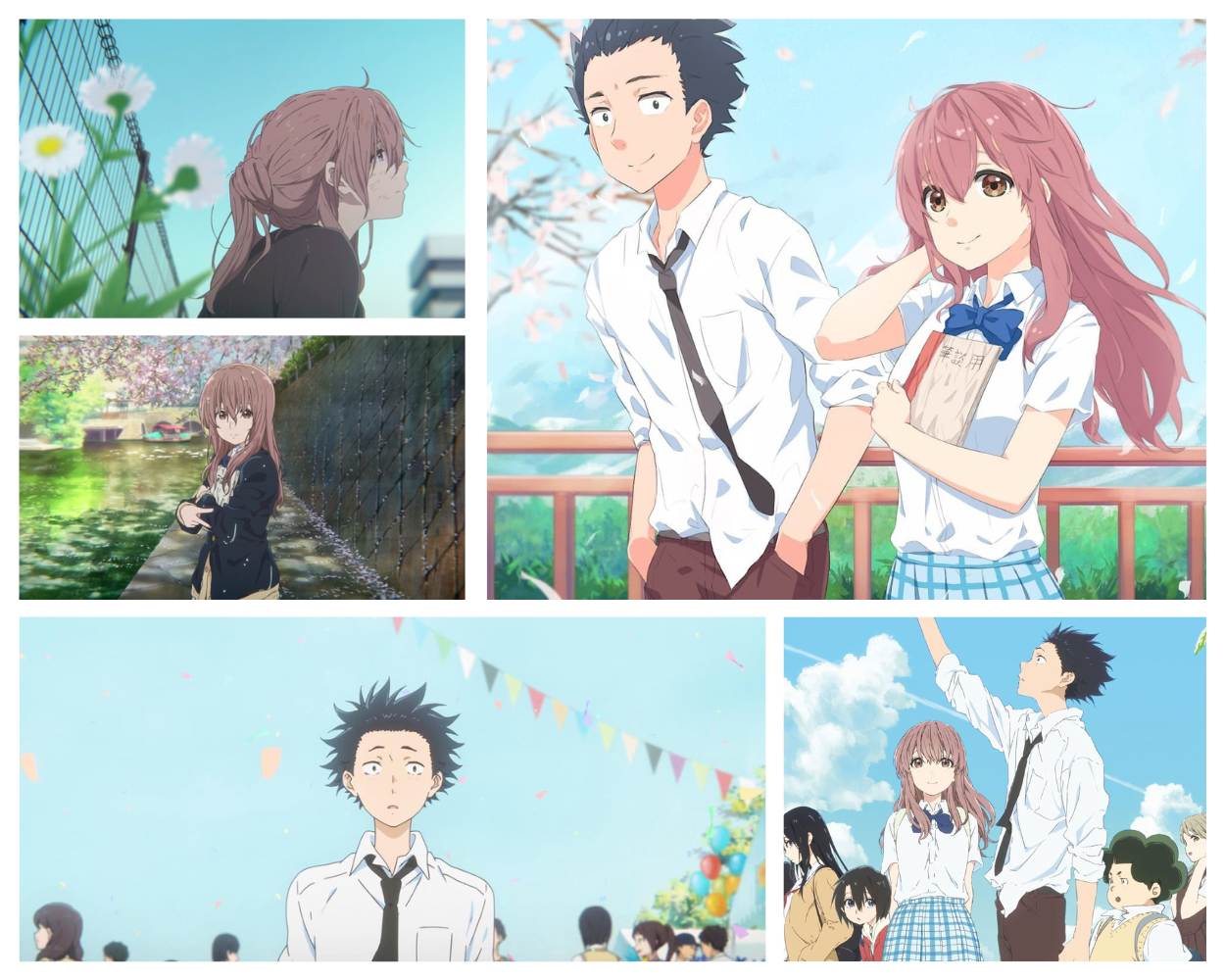
A Silent Voice follows Shoya Ishida, a former class clown who made the mistake of targeting Shoko Nishimiya because she was “different.” In elementary school, Shoya was the ringleader of the bullies. He mocked her voice, tossed her hearing aids, and made her life miserable. However, when the teachers finally intervened, his classmates turned on him. The bully became the bullied.
Fast forward to high school, and Shoya is the outcast. He has blocked out the world, convinced he deserves to suffer. He has sold all his possessions, quit his job, and plans to end his life. But before he does, he wants to do one last thing: return Shoko’s notebook.
What I love about this plot is that it doesn’t shy away from how awful kids can be. It doesn’t excuse Shoya’s past actions, but it asks a powerful question: Does a bad person deserve a second chance? The film weaves together Shoya and Shoko’s complex emotions, depicting their struggles in navigating the treacherous waters of forgiveness.
Character Analysis: The Flawed Cast
Unlike many anime that feature clear-cut heroes and villains, A Silent Voice features a cast of incredibly flawed, realistic teenagers. Here is my breakdown of the key players.
Shoya Ishida (The Seeking Redeemer)
Shoya is a difficult protagonist to like at first. We watch him torture a deaf girl for fun. But the brilliance of the writing is how it shifts our perspective. By high school, Shoya is paralyzed by social anxiety. He walks with his head down, covering his ears to block out the noise of people he thinks hate him. His journey isn’t about “getting the girl”; it’s about learning to like himself enough to look people in the eye again.
Shoko Nishimiya (The Silent Sufferer)
Shoko is heartbreaking. She apologizes constantly, even when she has done nothing wrong. Her instinct is to smile through the pain to avoid burdening others. The film does an excellent job of showing that she isn’t just a “saintly victim”—she has her own self-hatred. She believes she destroys everything she touches, which mirrors Shoya’s guilt perfectly.
Naoka Ueno (The Unrepentant Bully)
If you search for “Ueno A Silent Voice” online, you will find a lot of hate. She is the controversial character. Unlike Shoya, she refuses to believe she did anything wrong. She is blunt, aggressive, and still treats Shoko poorly in high school. However, she serves a vital purpose: she represents the “honest” cruelty of the world. She forces Shoko to stop hiding behind a fake smile. I dislike her, but I respect her role in the story.
Miki Kawai (The Fake Nice Girl)
In my opinion, Kawai is worse than Ueno. Kawai is the class representative who laughs along with the bullying but plays the victim the moment a teacher walks in. She refuses to accept any responsibility, claiming she was “just watching.” She represents the hypocrisy of bystanders who enable bullying but want to keep their hands clean.
Yuzuru Nishimiya (The Protector)
Shoko’s younger sister, Yuzuru, initially poses as her boyfriend to protect her from guys like Shoya. She is fiercely protective but also deeply troubled. Her hobby of taking photos of dead animals is her way of trying to desensitize Shoko to the concept of death, hoping it will stop her sister from committing suicide. It is a dark, twisted, but loving logic.
The Visual Language of Anxiety: The “X” Marks
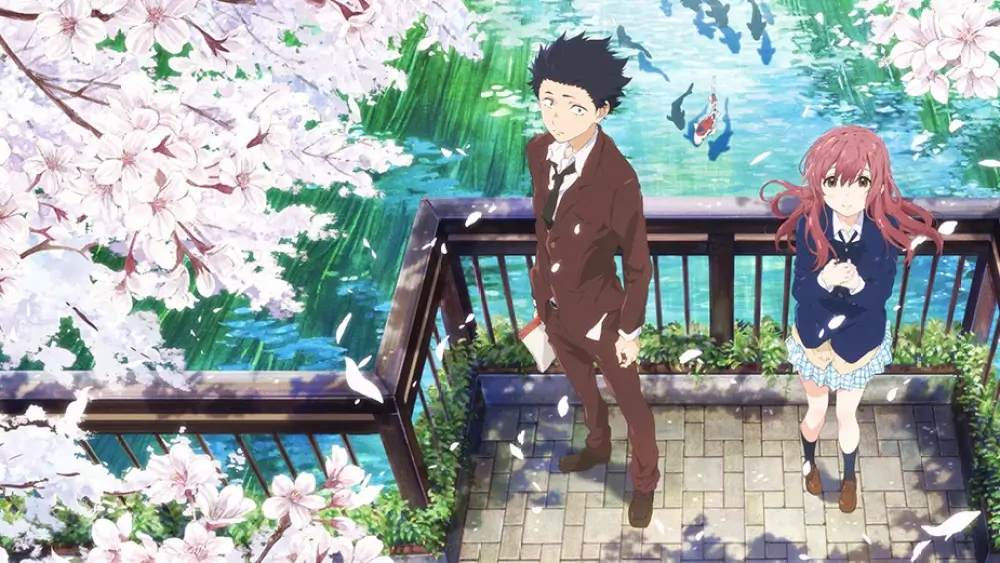
One of the most striking aspects of A Silent Voice is how it visualizes social anxiety. Shoya literally cannot look people in the eye. To represent this, director Naoko Yamada uses large blue “X” marks over the faces of his classmates.
This isn’t just a stylistic choice; it’s a perfect metaphor. The “X” symbolizes his inability to connect. He has blocked them out because he is terrified of their judgment. As Shoya begins to open up and form meaningful connections (starting with his new best friend Nagatsuka), the “X” marks peel off like stickers. Watching the final “X” fall away at the end of the movie is one of the most cathartic moments in anime history.
Kyoto Animation: Flowers, Legs, and Water
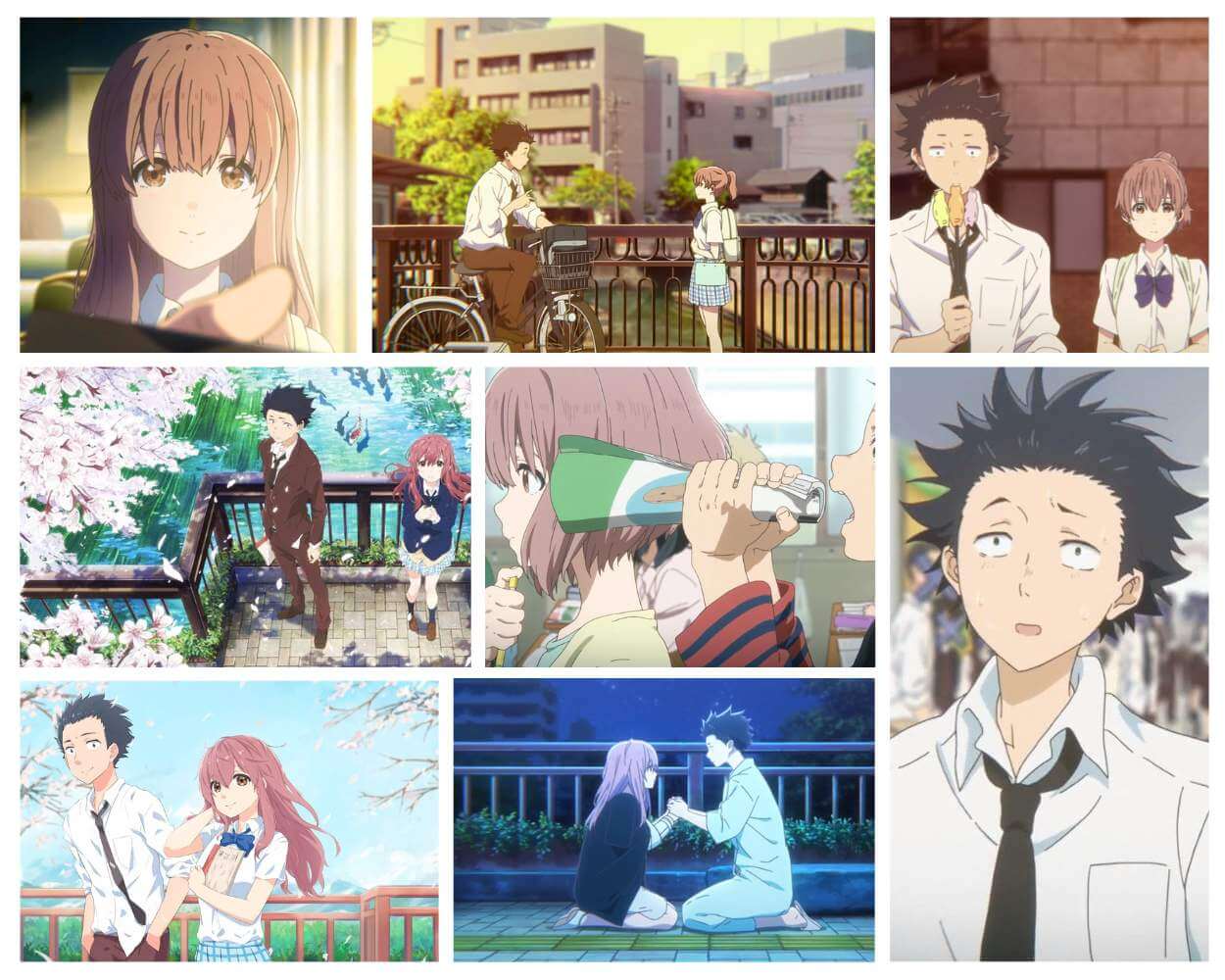
The animation in A Silent Voice is nothing short of breathtaking. Kyoto Animation (KyoAni) is known for its meticulous attention to detail, and they went above and beyond here.
The Focus on Body Language
Yamada is famous for her “legs cinema.” She often frames shots on the characters’ legs or hands rather than their faces. This is brilliant for two reasons:
- It forces the audience to read body language, which is how Shoko (who is deaf) interprets much of the world.
- It mirrors Shoya’s anxiety, as he spends most of the movie looking at the ground.
The Flower Language (Hanakotoba)
If you pay close attention, you will see specific flowers in the background of key scenes.
- Blue Cyclamen: Often seen around Shoko, these symbolize resignation and “the enduring link of love.”
- Daisies: Represent purity and innocence, often framing Shoko when she is trying her best.
- Koi Fish: The koi in the river represent courage and perseverance (swimming upstream).
The Soundtrack: Sounds You Can Feel
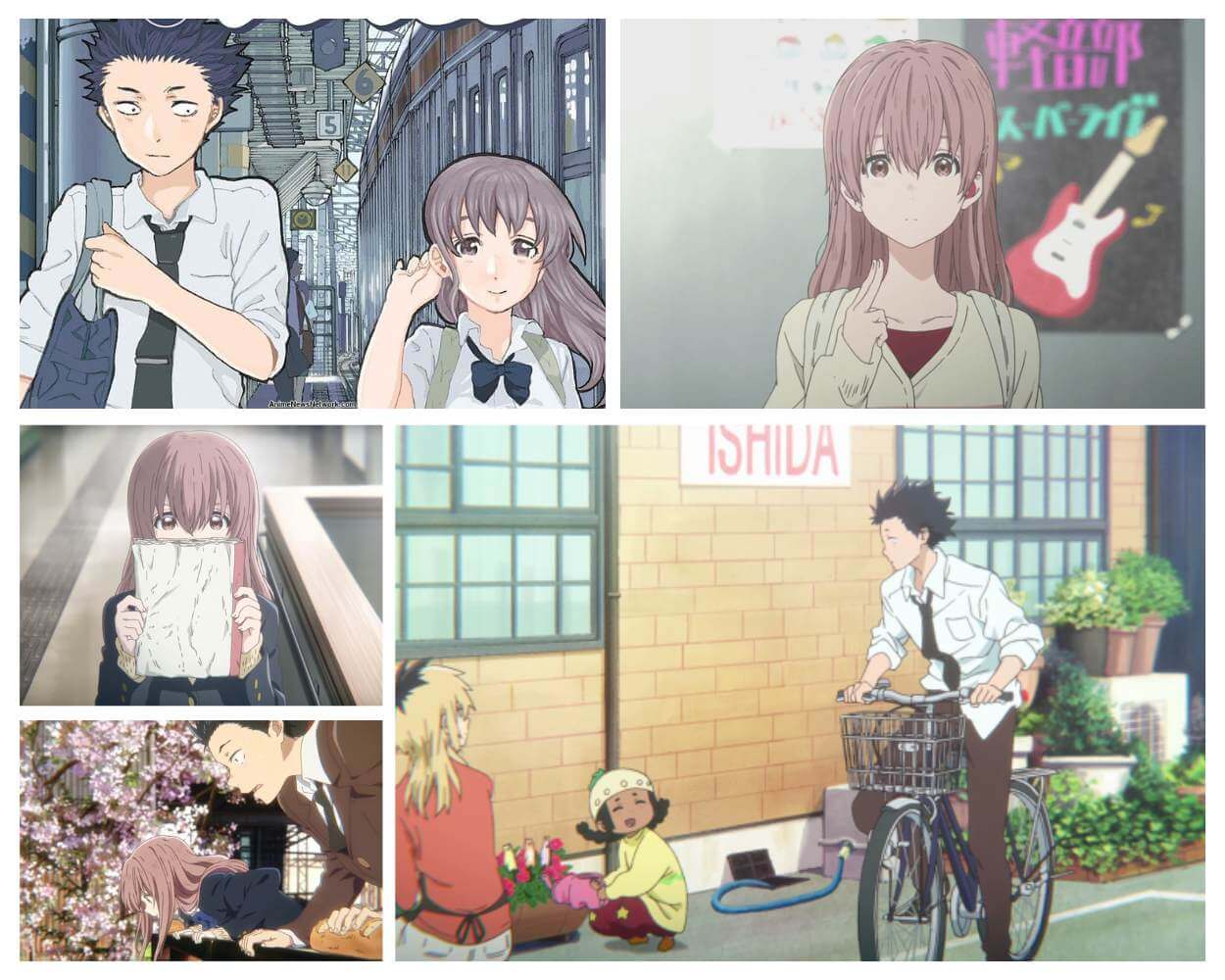
The film’s soundtrack, composed by Kensuke Ushio, is a character in itself. Ushio wanted the music to reflect Shoko’s world. To do this, he famously recorded sounds inside a piano.
He took a microphone and placed it inside the body of the piano while playing, capturing the mechanical thumps, the creaking of the wood, and the “noise” that usually gets filtered out. This creates a muffled, tactile soundscape that mirrors Shoko’s hearing impairment. The track “lit(var)” completely breaks me every time I hear it. The music isn’t just background noise; it swells and crashes like waves, representing the overwhelming emotions that Shoya tries to suppress.
Movie vs. Manga: What Did You Miss?
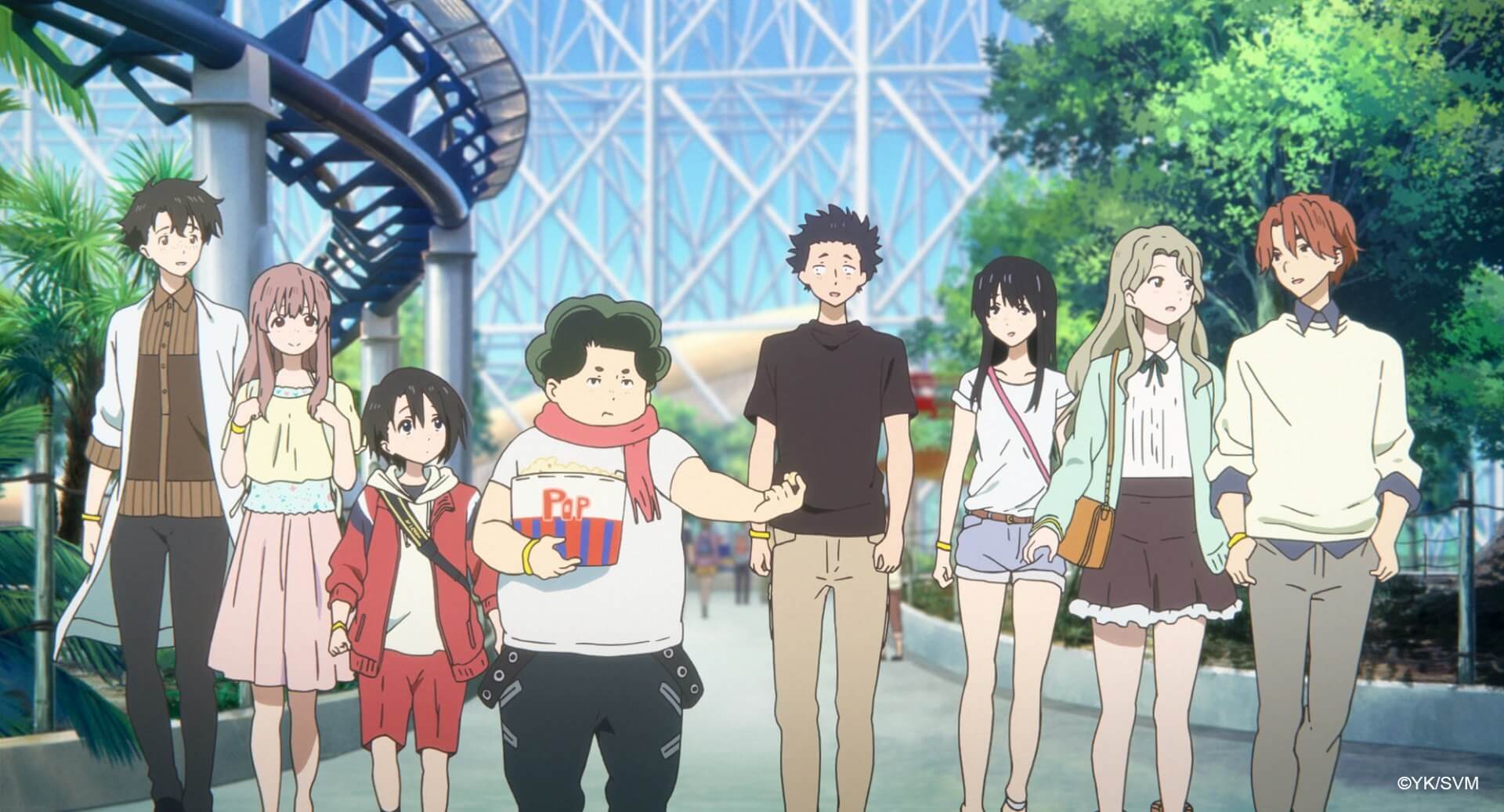
As much as I love the movie, it is impossible to condense a 7-volume manga into a 2-hour film without losing something. If you loved the movie, I highly recommend reading the manga to fill in the gaps.
📖 Key Differences
- The Movie Making Arc: In the manga, the friend group actually comes together to make an amateur movie for a competition. This plotline was the driving force that brought the group together, but it was almost entirely cut from the film to focus on the romance/redemption.
- Mashiba’s Role: The character with the orange hair (Mashiba) feels a bit pointless in the movie. In the manga, he has a dark backstory about bullying and serves as a foil to Shoya.
- The Ending: The manga goes further into the future, showing us the characters as adults attending their Coming of Age ceremony. It provides a nice sense of closure, showing Shoya and Shoko holding hands and facing the door to their reunion together.
Why A Silent Voice is a Masterpiece
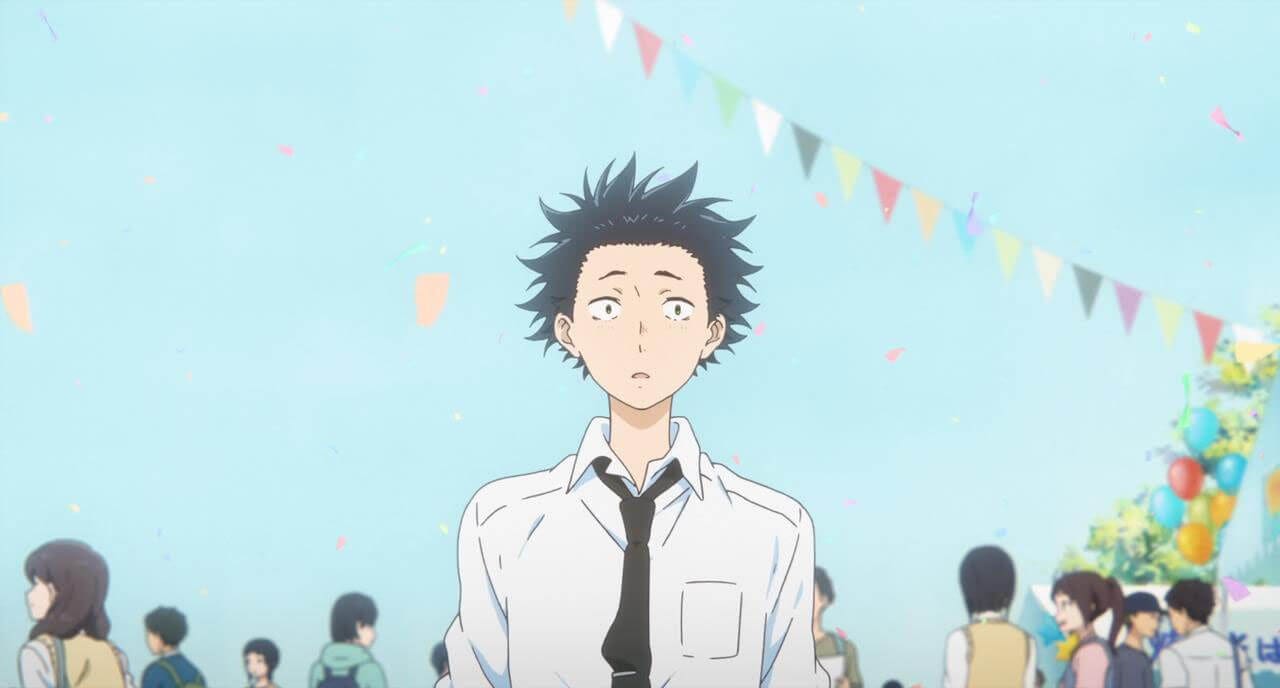
A Silent Voice is a captivating, thought-provoking, and deeply moving animated drama that will continue to resonate with audiences for years. It doesn’t offer easy answers. Forgiveness is messy. Redemption takes work.
The film doesn’t end with a kiss or a magical fix. It ends with Shoya finally being able to hear the world around him. He takes his hands off his ears, looks up, and cries as he realizes he is allowed to exist. As we navigate the complexities of our lives, Shoya’s journey serves as a poignant reminder that it is never too late to change.
Video Review: Understanding the Themes
If you want a deeper look into the philosophy of the film, I recommend checking out this breakdown:
Frequently Asked Questions
Is A Silent Voice a romance?
Yes and no. While there are romantic feelings (Shoko literally tries to confess to Shoya, but he misunderstands “Suki” as “Tsuki” or Moon), the movie is primarily about self-love. Shoya cannot love anyone else until he learns to forgive himself. The romance is a subplot to the redemption.
Why did Shoko try to jump?
Shoko believes that she is a burden to everyone around her. She sees Shoya losing his friends and being ostracized, and she blames herself for his suffering. She believes that if she disappears, everyone else will be happy. It is a tragic misunderstanding of her own value.
What does the ending mean?
The ending shows Shoya at the school festival. He looks around and finally sees the faces of his classmates (the X’s fall off). He hears their laughter and conversation. It symbolizes that he has finally accepted that he is part of the world again. He has forgiven himself.
1 comment
I always find myself lingering on posts like this because A Silent Voice was not just something I watched once and moved on from. It was one of those anime films that changed how I think about bullying, social anxiety, and accountability in storytelling. When I first watched it, I related far more to Shoya’s isolation than I expected, especially the way guilt quietly shapes every interaction he has. It is no wonder people still search for things like “A Silent Voice explained,” “anime about social anxiety,” or “bullying themes in anime films.”
What really stands out to me is how intentional the animation choices feel. The use of framing, silence, and those X marks on people’s faces made the anxiety feel lived in rather than dramatized. I remember realizing halfway through that the film was showing me what anxiety feels like instead of telling me, which is something animation does better than live action in many cases. I think that is why Kyoto Animation gets so much respect for this project in particular.
At the same time, I understand the criticism around the adaptation. After reading A Silent Voice, I could clearly see how much depth was trimmed to fit a single movie. Characters like Nagatsuka feel more symbolic in the film, whereas the manga lets them breathe. It makes me curious how others feel about this tradeoff. Do you think the emotional impact of the movie is stronger because it is condensed, or do you feel the missing arcs weaken its message about redemption and forgiveness?